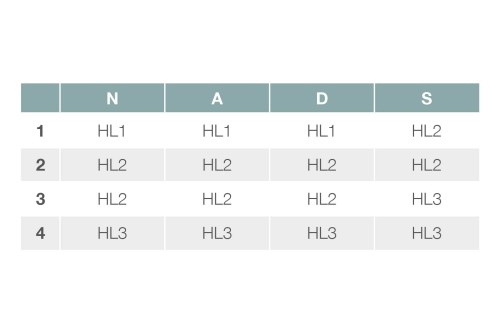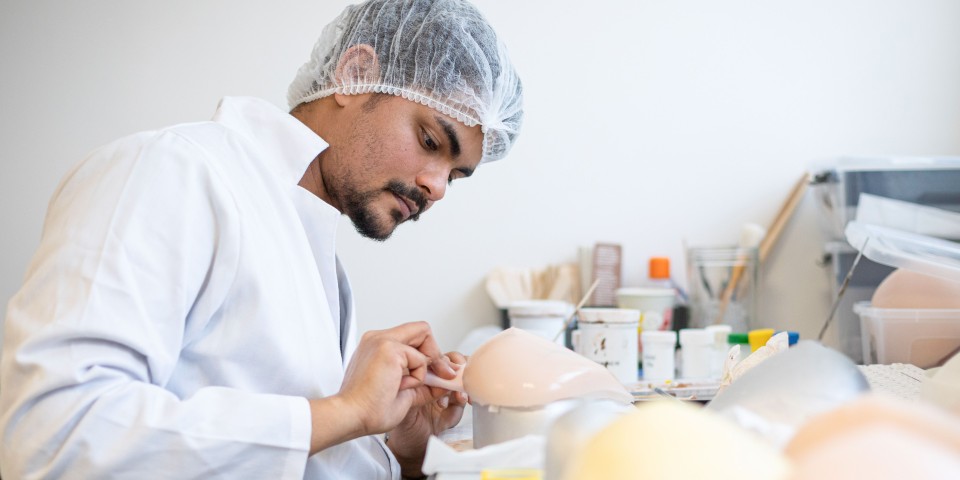
High-performance products for fire-sensitive applications
Oct 01, 2019 Read time: approx. MinutesMinute
Reliable fire-fighters
Fire-safety regulations for trains have always been very high, but they have now become even tighter across the EU. Even so, most of the new specifications are still met by WACKER high-performance silicone rubber compounds for fire-sensitive applications. The company has now rounded out its portfolio with a new grade.
Unconsciousness strikes after just a few breaths. Toxic fumes are the most common cause of death among fire victims. Billowing fumes blind and disorientate, preventing victims from seeing the nearest escape route. But even more dangerous are the toxic compounds they contain. Carbon monoxide, the cause of unconsciousness, is the best known example. But nowadays we also know that smoke can contain over 5,000 different substances which are harmful to humans. More than 90 percent of fire victims die from smoke inhalation, not from being consumed by flames. They fall unconscious and cannot save themselves.
“That is the reason why means of public transport, such as trains, are particularly subject to very stringent fire-safety codes – train passengers need to be able to escape in an emergency with as little harm as possible,” says Dr. Martin Bortenschlager, senior marketing manager for Rubber Solutions at WACKER SILICONES. Fire-safety codes are tightened up at regular intervals. They were made much tougher in 2018, with the adoption of a new pan-European standard that supersedes national norms and is binding on all makers of rolling stock. Since then, all components installed in rolling stock must comply with EN 45545-2.
Silicone rubber compounds are becoming more and more popular with producers of elastomeric components. “Generally, the cured rubbers or silicone elastomers are flame-resistant rule and produce only small amounts of smoke when burned. This makes them ideal for use in rolling stock and public buildings – all applications where fire-safety is paramount,” continues Dr. Bortenschlager. What is more is that when silicones burn, they do not release any halogenated compounds and the fumes are much less toxic as a result.

Chinese high-speed trains in Shanghai station
5.000 plus different substances that are harmful to humans are lurking inside smoke fume.
European standard EN 45545-2 establishes three different hazard levels (HLs)
Operating Class
1: Vehicles operating on the surface
2: Vehicles operating in tunnels shorter than 5 km
3: Vehicles operating in tunnels longer than 5 km
4: Vehicles operating in tunnels in which side evacuation is not possible
Design Category
A: Automatic train having no on-board staff trained in emergency procedures
D: Bilevel rail cars
S: Sleeping cars
N: Other, standard vehicles

Stricter requirements
With the new ELASTOSIL® R 771 solid silicone rubber, WACKER provides producers of rolling-stock components with a material that meets the R1 and R7 requirement sets of the European fire-safety standard EN 45545-2. Among the applications which it covers are profile strips for doors and windows, as well as the bellows used in gangways to connect coaches.
The new fire-safety standard distinguishes different classes of rolling stock: These four operating classes reflect the specific type of infrastructure in which the trains operate and thus indicate the speed at which they can be evacuated. The highest-level operating class applies, for instance, to underground tunnel sections where side evacuation is not possible.
The standard also identifies four different design categories, called structural train classes. These specify, for example, whether the coach is a sleeping car or a bilevel car. The operating and structural classes are then used to derive hazard levels which specify the fire-safety requirements which must be met by installed components and materials. For example, all the materials in sleeping cars that travel through long tunnel sections must be of a higher specification than in regional trains that frequently stop above ground and can be evacuated more quickly.
The resulting matrix of operating and structural classes is then used to establish hazard levels or HLs. HL1 denotes the lowest specification and HL3, the highest. The hazard level ref lects the requirements and limit values which a component must meet in order that the fire risk may be reduced to an acceptable level. Components on 80 to 85 percent of rail vehicles need only meet the HL 2 specification.

Production of ELASTOSIL® R 771 in a strainer being demonstrated in the silicone pilot plant in Burghausen.
“That was the minimum goal we set ourselves when developing the specialty grades in the ELASTOSIL® series,” says Dr. Andreas Bacher, who heads up an applications laboratory for silicone rubber at WACKER in Burghausen. Following numerous tests performed to the new European standard, a number of silicone rubber grades and Shore A hardnesses were awarded the corresponding certificates. “This gave us the proof that the existing ELASTOSIL® portfolio which WACKER supplies to manufacturers of certain modules already contains HL 3 products that are in compliance with requirement sets R22 and R23,” he continues. New test methods, such as a new way of determining the spread of a f lame, have identified further possible market needs.” Compounders have a need for silicone elastomers which have been optimized even more for such fire-safety-critical applications. Components made from ELASTOSIL® R 771 meet HL2 for the more stringent R1 and R7 requirement sets.

Typical profiles extruded from ELASTOSIL® R 771.
Combination of fillers
Formulation know-how proved useful in a number of ways while our experts were developing ELASTOSIL® R 771. To meet the new fire-safety standards, they modified the silicone content and worked out the best combination of fillers to use. The outcome is that the silicone rubber compound has the optimal rheology for ensuring that the molecules have the ideal crosslinking density. That, in turn, makes it possible for customers to tailor the mechanical properties of their products to the level they desire.
Silicones have the general advantage of being difficult to ignite, which means that they have an inherently high level of fire safety. What is more, they do not continue burning by themselves: as soon as the ignition source is removed, the flame quickly extinguishes. And, because the combustion products are mostly carbon dioxide, water and silicon dioxide, hardly any toxic gases are released. Yet another advantage is that ELASTOSIL® produces white rather than black smoke. Consequently, it transmits more light and causes less disorientation in danger zones.
Silicone rubbers possess a range of other advantages as well. They are highly heat stable, do not age even when continually exposed to UV light, oxygen or ozone, and are permanently elastic at low temperatures down to -40 °C without the need for plasticizers.
ELASTOSIL® R 771 is, like its predecessor ELASTOSIL® R 770, a peroxide-curing system. The peroxide needed for crosslinking is added during production, but pre-mixed products are also available.

Passenger compartment in a high-speed train used by Polish railways.
ELASTOSIL® R 771 is currently supplied in Shore A hardness values of 60 and 70. When cured, the two variants have an elongation at break of 430 and 260 percent. WACKER is already working on a further version that has a Shore A hardness of 50. Manufacturers of train parts will see no changes when it comes to handling the new silicone rubber. It can be molded, extruded and calendered by the usual methods. It lends itself to the production of elastic molded parts and profiles and of panels, films and fabric-reinforced silicone sheets.
New EU directives are also increasingly superseding national standards governing public buildings. Just as in the case of rolling stock, smoke density and toxicity feature prominently in them. As all silicones in the ELASTOSIL® series are halogen-free and so release no harmful, corrosive hydrogen chloride in a blaze, the products are finding new applications in fire curtains, insulation, and door and window seals.
“We can expect f ire-safety regulations to become even tighter in the future,” says Bortenschlager. He went on to say that stricter regulations meant that materials manufacturers were going to be kept very busy meeting new challenges. “And we will continue to expand the ELASTOSIL® series so that the makers of such components can avail themselves of suitable regulatory-compliant silicone products – whether for rolling stock or for public buildings.”
Dr. Martin Bortenschlager, Senior Marketing Manager, Rubber Solutions, WACKER SILICONES
Contact
For more information on this topic, please contact:
Mr. Dr. Martin Bortenschlager
Director Business Team Engineering Silicones
Rubber Solutions, WACKER SILICONES
+49 89 6279-1982
martin.bortenschlager@wacker.com








